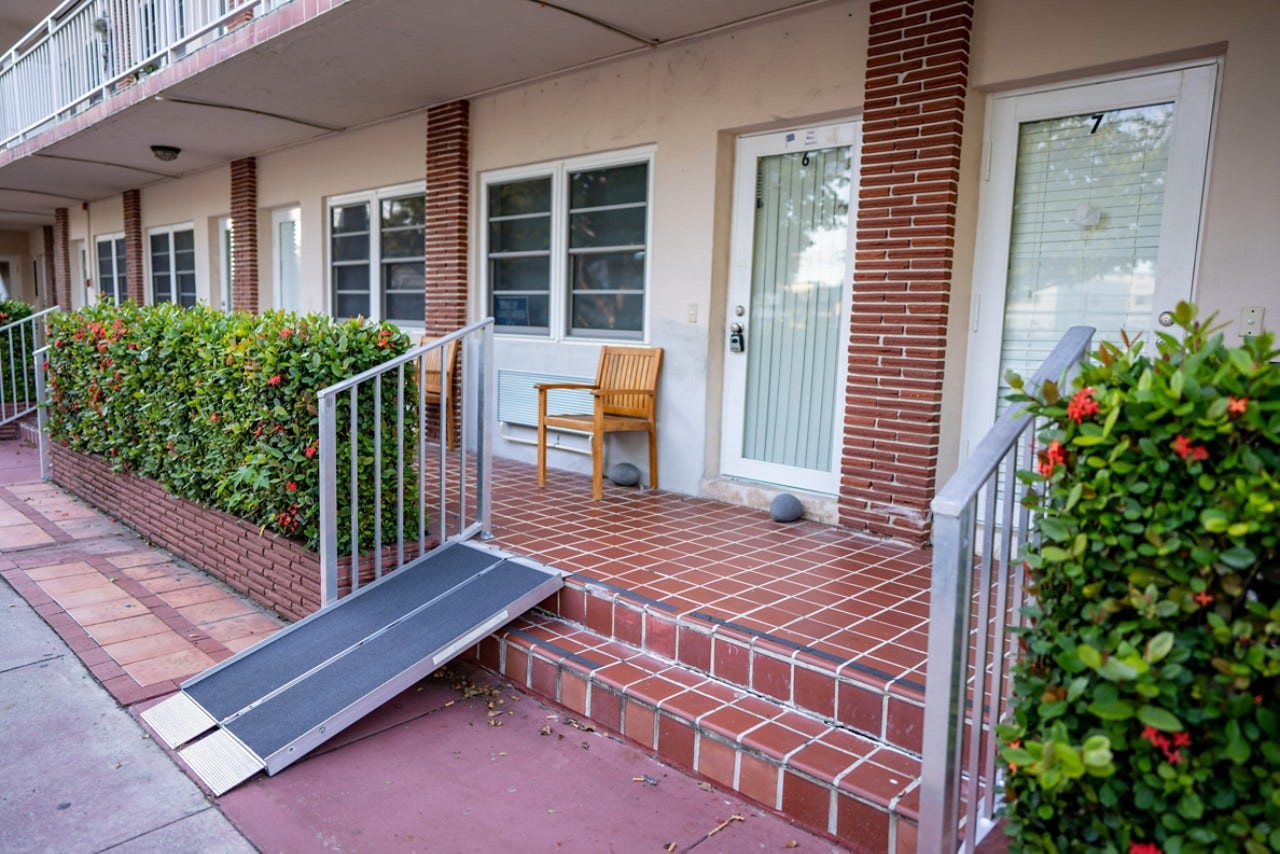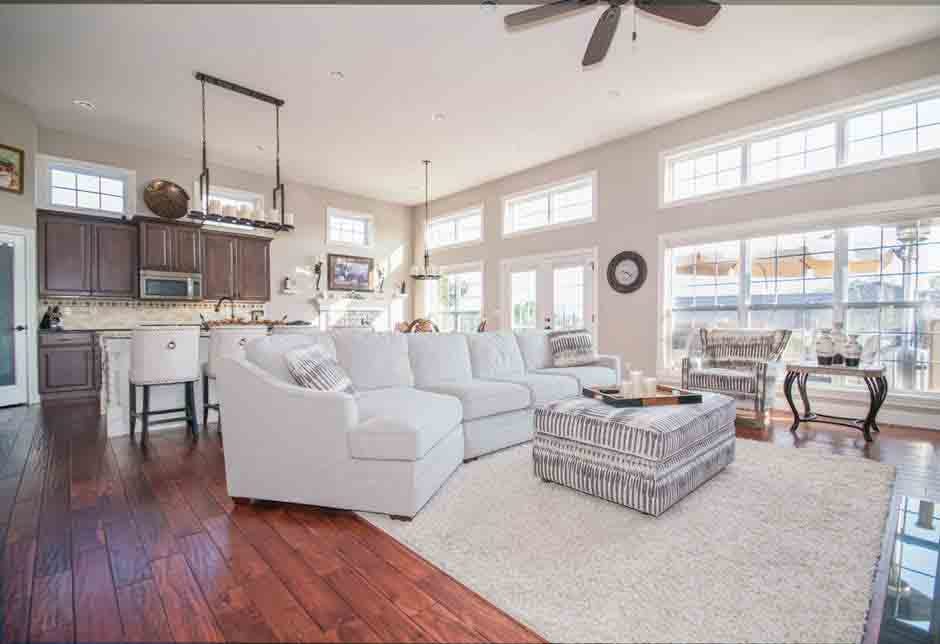
Aging in Place
If you’re looking for a safe place to call home for an older adult, you may have already considered an assisted living facility or a long-term care home. While nursing homes and senior living facilities are a great option, some seniors may prefer to stay in the comfort and familiarity of their current home. This is known as “aging in place”.
What Percentage of Older Adults Want to Age in Place?
The desire for older adults to stay in their homes has increased over the years. In fact, the American Association of Retired Persons (AARP) found that 77 percent of adults aged 50 and older wanted to stay in their home long-term.
Is Aging in Place a Good Idea?
For family members, the idea of aging in place can seem overwhelming. It is a common misconception that family members will have to give up a large percentage of their time to make aging in place possible for their loved ones. However, aging in place has many benefits to the mental, physical, and emotional well-being of older adults, making it a great idea for some seniors.
What Do I Need to Age in Place?
Before choosing to age in place, you should consider the needs of the older adult. Assessing individual needs will help you determine what you require to create a successful age-in-place scenario for an older adult. A few aspects to consider include:
1. Healthcare Services for Older Adults
As seniors age, they may require assistance with daily tasks like dressing, bathing, meal prep, or medication management. Home health aides can help with these tasks as well as provide physical therapy or routine medical assistance to seniors who are aging in place. Home health aides are often covered by Medicaid, so they are a great option for family members of older adults who may not be able to take on caregiving duties. If you’re considering a home health aide, you’ll want to meet with your primary care provide, and speak with your Medicare company to ensure you qualify for in-home healthcare.
2. Social and Physical Activity for Older Adults
Unlike transitioning to a long-term care facility, where they might need to make new social connections, aging in place allows seniors to maintain current connections. Maintaining existing social connections allows older adults to combat loneliness, which is a common concern for aging people.
Seniors may also find social connections through physical activity. Many local recreation facilities hold exercise classes for older adults. These are a great option, as they allow seniors to engage in both social and physical activity.
3. Transportation for Older Adult
- Transportation for seniors: Some states and cities offer transportation for adults aged 65 and older. This transportation can be door-to-door and will typically take passengers to multiple locations within a designated area. You’ll want to check with state and local transportation services to see if an older adult qualifies for senior transportation services.
- Non-Emergency Medical Transport (NEMT): Non-emergency medical transportation is a great option for seniors. NEMT provides door-to-door transportation to and from routine, non-emergent medical appointments. Like home healthcare, some seniors can get NEMT rides covered by Medicaid.
- Wheelchair accessible vehicles and swivel car seats: Whether a senior can drive on their own, or they’ll be driven by a caregiver, a wheelchair accessible vehicle and swivel car seat can provide freedom to get from point A to point B, while maintaining safety and independence for older adults.
What Is the Most Desirable Home Design for Aging in Place?
Without home modifications, an older adult may face challenges aging in place. Several home modifications can be made to create a safe and accessible environment:
Wheelchair Ramps for Entryways
For seniors with mobility challenges, step-free access in and out of their home can not only prevent injury but also encourage independence and social activity. You can install a permanent, or a temporary ramp depending on your needs. Be sure to check out our guide to home wheelchair ramps to find the right ramp for you.
Accessible Bathrooms for Older Adults
Did you know that the bathroom is considered the most dangerous room in a senior’s home? A fall in the shower could lead to a medical emergency, but a bathroom can easily be made more accessible and safer with a few adaptations:
- Accessible showers: roll-in and step-free showers provide step-free access, so older adults do not have to climb into and out of a tub.
- Grab bars: For those requiring support in the shower, grab bars can be used to assist older adults with balance and stability. Both temporary and permanent shower grab bars can be installed, but be aware of grab bar weight limits.
- Shower chairs and shower benches: For those who cannot safely stand in the shower, a shower chair or shower bench can be used, so the older adult can sit while bathing. Like shower grab bars, both temporary and permanent shower chair options can be installed.
Stair Lifts
For seniors with mobility challenges, navigating staircases can pose a significant risk. Installing a stair lift for older adults who live in multi-level homes can allow for access to all areas of the home and help prevent falls.
Furniture for Older Adults
Due to mobility challenges, some older adults may benefit from having specific, mobility-friendly furniture in their home. While you should not have to buy all new furniture, a few specific pieces may help some seniors maintain independence:
- Lift chairs: A lift chair looks very similar to an average recliner, however, lift chairs are powered, so they can raise and lower to help an individual get into and out of a chair.
- Adjustable beds: Like a lift chair, an adjustable bed can help older adults when transitioning to different positions. Adjustable beds can be used to assist seniors in transitioning from laying down to sitting up.
What Are the Biggest Considerations around Aging in Place?
You’ll want to consider multiple factors before deciding if aging in place is right for you or your family. Most importantly, you should determine your needs.
Can a senior live at home, or would they thrive in a senior living facility?
Does the older adult need frequent medical care?
Can they drive?
Can home modifications be made easily and within your budget?
Answers to questions like these can help you determine whether aging in place is right for the senior in your life. To learn more about transportation, home modifications, and services available to older adults, check out the related articles below.




